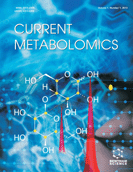Abstract
Behavioral and physiologic rhythms are temporally coordinated with daily changes in the environment. This is achieved by the circadian timing system, which synchronizes the body’s rhythms with the 24-hour solar day and feeding cycles. To better understand the role of circadian rhythms in metabolism and disease processes, an increasing number of studies have used large-scale metabolite profiling (metabolomics) to analyze biological specimens collected over the diurnal/ circadian cycle. Here, we review recent progress in the application of metabolomics to circadian rhythms research in mammals. Based on studies of the liver metabolome in mice, the circadian clock plays a key role in regulating carbohydrate, lipid, and nucleotide metabolism. Circadian metabolomics has also revealed marked changes in liver function in response to the timing of food consumption, and has led to the discovery of novel signaling pathways underlying fat metabolism. In humans, circadian profiling of metabolites in plasma has confirmed an important role for the clock in regulating steroid hormone metabolism and lipid homeostasis. A method for estimating internal body time has also been developed using plasma metabolomics, which could potentially be used to optimize the timing of drug delivery to improve patient outcomes and reduce unwanted side effects. Looking forward, metabolomics approaches can be used to evaluate the impact of genetic and environmental factors on circadian-regulated metabolic pathways, while providing valuable insight into the role of the circadian clock in regulating complex biomolecular networks.
Keywords: Chronobiology, circadian, disease, metabolism, rhythm, sleep.
 32
32








.jpeg)








